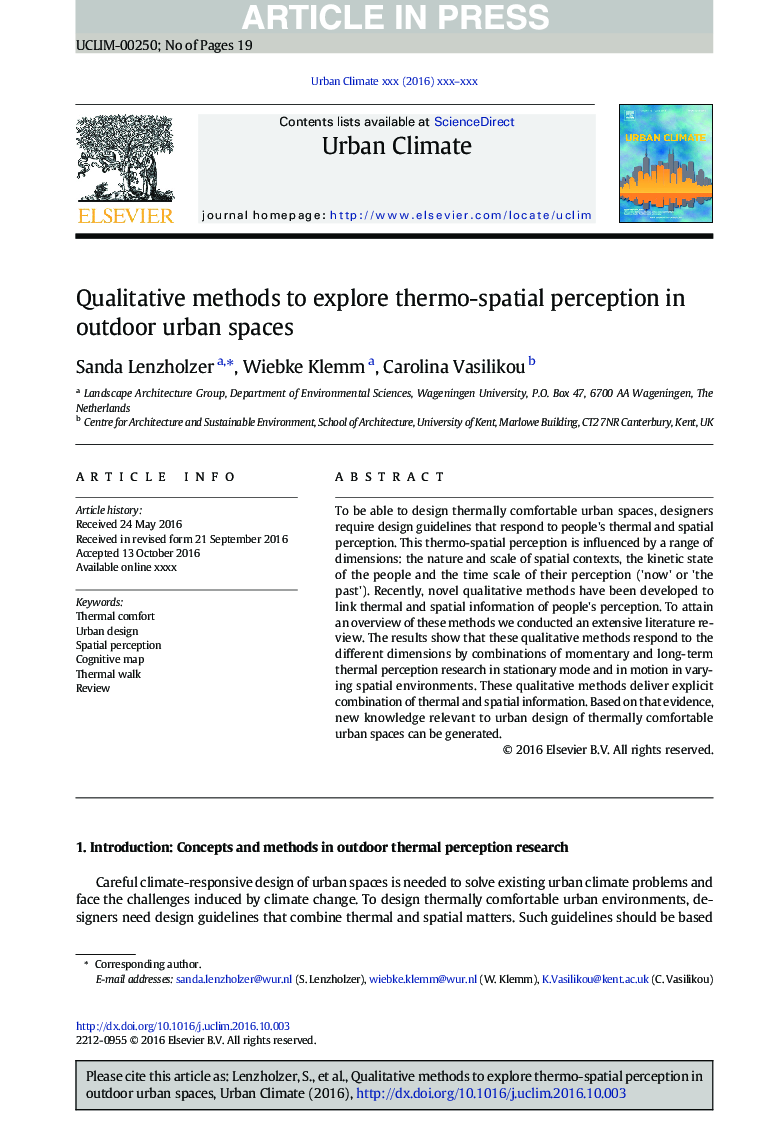| Article ID | Journal | Published Year | Pages | File Type |
|---|---|---|---|---|
| 6576969 | Urban Climate | 2018 | 19 Pages |
Abstract
To be able to design thermally comfortable urban spaces, designers require design guidelines that respond to people's thermal and spatial perception. This thermo-spatial perception is influenced by a range of dimensions: the nature and scale of spatial contexts, the kinetic state of the people and the time scale of their perception ('now' or 'the past'). Recently, novel qualitative methods have been developed to link thermal and spatial information of people's perception. To attain an overview of these methods we conducted an extensive literature review. The results show that these qualitative methods respond to the different dimensions by combinations of momentary and long-term thermal perception research in stationary mode and in motion in varying spatial environments. These qualitative methods deliver explicit combination of thermal and spatial information. Based on that evidence, new knowledge relevant to urban design of thermally comfortable urban spaces can be generated.
Related Topics
Physical Sciences and Engineering
Earth and Planetary Sciences
Earth and Planetary Sciences (General)
Authors
Sanda Lenzholzer, Wiebke Klemm, Carolina Vasilikou,
